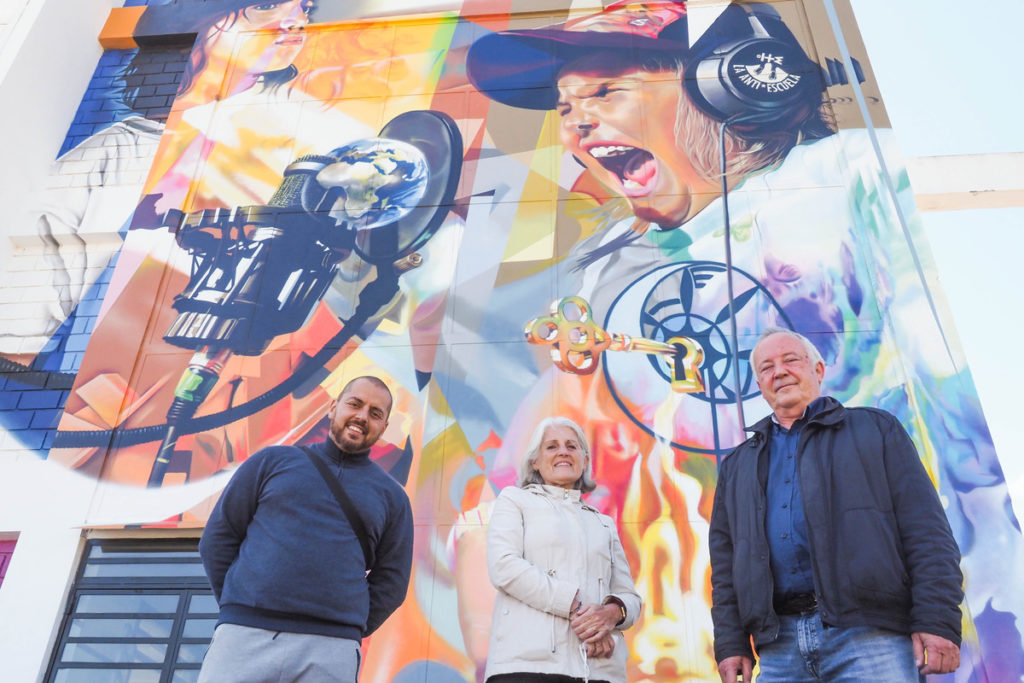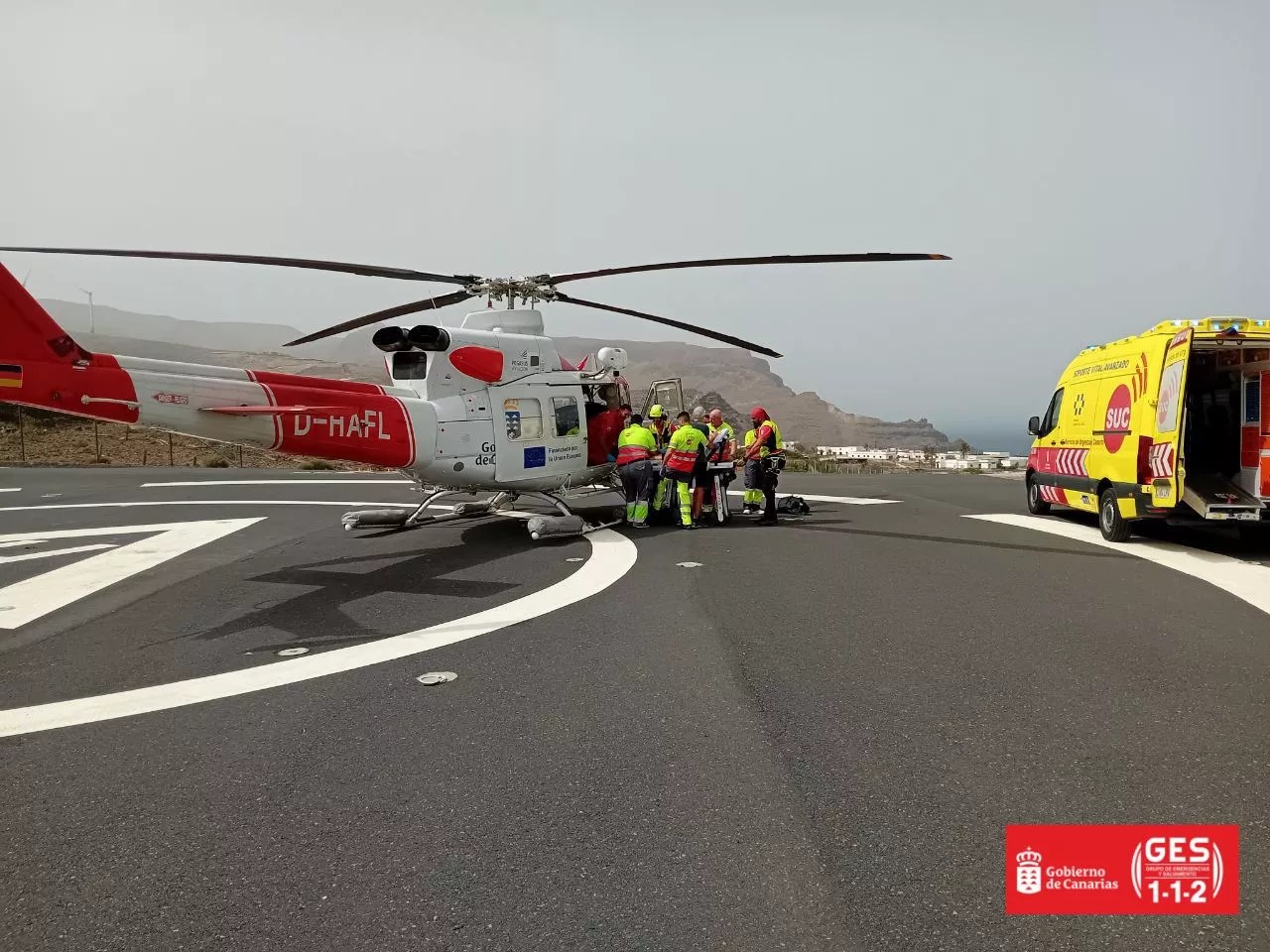
It’s midnight. In El Tablero the wind picks up, as almost always in this area. At school, Susana Caloca and José Barco Cabello, president of the Giro Association, and coordinator of the Faro schools project receive DIARIO DE AVISOS. Along with them, Eliezer Marrero, vice president of Giro. They are three of the multiple actors behind the Faro project, a community intervention action that, among other objectives, seeks to generate protection factors for children. They are endorsed by therapeutic work with adolescents with serious behavioral problems. “We devised the Faro project for the Southwest District, it is not something that can be printed and done in another context because it is designed for this district,” explains Eliezer as we enter the El Tablero school, one of the eight Faro schools that participate in the project. “What we do is create a network that favors and improves the conditions of boys and girls in all areas. We had to help in the schools. There are some that are in very bad condition”, they explain from Giro.
What the Faro project proposes is that many entities that are working in the Southwest district turn and align their projects to improve schools. “For example, we have the urban garden of El Sobradillo, which we also manage, and nine different entities participate in this community intervention, so that 50% of everything that is harvested is distributed to soup kitchens in the municipality where there are children and girls. But the yogurts that the children here at school are going to eat today, are cleaned, go to the garden, become seedbeds, and return to the schools. Let’s say that this is the philosophy of the project, and of Giro”.
The Faro Schools project began in December 2020 and already reaches 70% of all students enrolled in the Southwest, which means more than 8,000 schoolchildren. As Eliezer explains, “we located the Faro project in the Southwest district because 60% of the children who end up in the protection system live here. That’s a lot”.
As we walk through the school you can see some of the interventions that have been carried out, such as the mural in one of the courtyards, in which you can see a lighthouse from which multiple lines of collaboration emerge. “In the schools in which we intervene, we help, for example, to paint, like this one in El Tablero, which was the first Faro school, and in which the entire interior was painted last year with a community intervention. This center had been unpainted for 15 years. The school looked for the financial means and asked us for help, and all the associations that collaborate with us came (about twenty), from small children to Montse, who was 87 years old, came to paint”, explains Eliezer.
Another of his interventions is outside the schools, in Santa María del Mar, in a lot full of garbage, where he was dealing. “All the entities of the Faro project intervened there, we cleaned it, we repopulated it with Canarian plant flora and we did artistic actions,” they explain from Giro. “The final roundabout of Los Majuelos avenue, at the end of La Gallega, is also one of the points in the district in which we have intervened. We removed nine tons of rubble during a year. Now there is a Canarian garden, with dragon trees and tabaibas”, says Eliezer proudly.
The data shows that there are already almost 10,000 meters restored at the landscape level in these two years of Faro, in addition to the impact on schools.
During the walk through the center two young Germans are painting one of the walls. They belong to a European volunteer program and collaborate with the Faro Schools, lending a hand in whatever is needed. Another of the interventions that can be seen in the educational center is the mural that accompanies what was the old wrestling arena that the school had. “The Activoz association, which has a graphic arts workshop for functional diversity, made that mural in which you can see fighters,” explains Eliezer.
Another of the signs of identity has to do with valuing the work of the little ones. “For example, the lots that we restore, all of them, have a tarpaulin on the edge that says: area protected by the children of the Southwest. The drawings that are there are from the public school closest to that place, with messages for the adults who dirty their neighborhood, trying to take what is in the school to the street, and vice versa, the best that we have in the street bring it to the school”.
The visit to the school ends with the jewel in the crown of the community space in this center of El Tablero, the mural that the multidisciplinary artist Víctor Seus has painted on one of the exterior walls, and that under the title of Power to the children, shows all the symbolic force that two boys are capable of transmitting to the rest of the world.
Young people with judicial measures, another of Faro’s lines of work
From Giro they point out that in the district there is also a high percentage of minors who have to serve a sentence for reforms or juvenile justice. “We plan to welcome all the girls and boys who have to serve this type of sentence, and who live in the Southwest district or in Santa Cruz, so that they can repair the damage with us.” The result is to see these young people fulfilling their responsibility in the public spaces of the district. “We locate them and make them visible in community spaces, repairing the damage they may have done.”
















